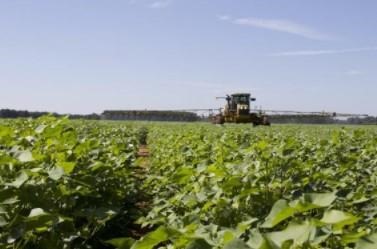Budgets Developed to Assist Producers
The Alabama Extension farm and agribusiness management team develops these budgets to assist producers. While there is no way to predict growing conditions prior to the growing season, budgets are based on above-average management.
Jessica Kelton, an Extension farm and agribusiness management regional agent, said budgets will differ for each farmer and operation.

“Crop budgets will differ, but these enterprise budgets give producers a starting point when developing their own budgets,” she said.
Kelton said growers who spend time working on the numbers before planting have a clearer picture of what the season may look like.
“If numbers don’t work on paper, they won’t be likely to work in the field,” she said.
Crop Input Supply Issues
One factor affecting producers differently in 2022 is the availability of herbicides and crop protection chemicals.
Steve Li, an Extension weed scientist, said crop planning should begin as soon as possible. The transportation crisis–coupled with supply issues–is driving prices for chemical inputs higher and limiting availability.
“The recent fertilizer and crop protection chemical price surge will no doubt encroach on row crop growers’ profit in 2022,” Li said. “Lack of key crop protection chemicals during cropping season can significantly interrupt pest management and cause application delays and pest control failures.”
Li said key herbicides–such as glyphosate, glufosinate and clethodim–will be in short supply because of COVID-related production disruption and transportation problems. Other herbicides–such as 2,4-D, S-metolachlor, paraquat and flumeturon–may run tight if demands go up. He said some insecticides and fungicides may also see this problem.
“Generic products of certain active ingredients will be hard to find because production disruption in China affects generics more than name brands,” Li said. “Multinational companies can supply the market with chemical volumes similar to 2021 or even slightly higher. However, the increase in their supply cannot fully cover the shortage of generic productions. Thus, an overall supply shortage is still expected for the U.S. crop protection market.”
Making Plans for 2022
Sawadgo said managing costs—which is one thing farmers have some control over—is important.
“The budgets provide sensitivity analysis to determine how net returns would differ under different yield and crop price scenarios, holding input use constant,” Sawadgo said. “While farmers don’t necessarily have control over what yields and prices will be, the sensitivity tables can help them consider various scenarios.”
These sensitivity tables are at the bottom of the budget PDFs.
Li said if producers can set their crop protection plans early, chemicals can be ordered from the dealer sooner. These producers will have better chances of securing some chemical shipments.
“Unfortunately, no one can fully predict future supply and delivery dates when so many problems occur in the supply chain,” Li said. “Getting some key crop production chemicals by ordering early is better than getting nothing at the end.”
Flexibility in 2022
Producers should be open to stretching the growing season longer.
“The chances are slim that the supply chain can deliver sufficient chemicals to burndown, plant and spray crops at the same time,” Li said. “We may need to start burndown early before chemicals run tight, stretch burndown and planting longer to decrease the need for chemical volumes per week, then hope for as much chemical as possible later in the season.”
Growers normally would not delay planting unless weather is unfavorable.
“It is reasonable to speculate we may need to delay planting even though weather conditions are ideal because of chemical shortages,” Li said.
Li stresses the importance of a flexible and well thought out plan. Producers should have multiple backup plans and think through ways to effectively use the crop inputs that are handy and available at any given point.
“Two- or three-way premixes should be considered,” Li said. “Premixes do a great job with weed control but are most widely used on corn and soybean. The crop choices and tank mixing flexibility are less inclusive. However, these options would be better than not using the active ingredient at all.”
Growers should look at operational historical yield data to determine the recent profitability of crop fields during the off-season. Identify areas or fields that often lose money.
“With fertilizer, fuel, chemical and labor costs through the roof, not planting a few poor-yielding fields or field sections may be a wise move to cut back on chemical volume and save money in a bad inflation situation,” Li said.
Source : aces.edu